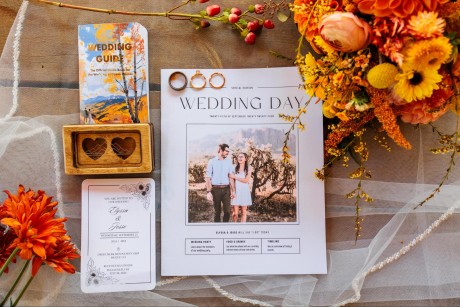Getting Your "Yes": Proposal Do's and Don'ts
You’ve got the ring; you’ve got your person…now you have to get the ring on your person. It seems simple enough, but your nerves are probably telling you otherwise. And for good reason. In a 2015 study from SuperBreak, 1 in 4 women have rejected a proposal. A more recent 2021 study published online in the Journal of Family Psychology presented 6 major characteristics that are determining factors in rejecting a proposal (these studies were conducted with heterosexual couples only – additional research regarding LGBTQ couples could not be found).
1. The proposal was public – In 45% of the rejected proposals, other people were present.
2. The couple never discussed marriage – In 40% of the rejections, marriage was not a topic that had been addressed at any point.
3. The couple weren’t dating – 10% of the rejected proposals were from men who had never dated the women.
4. The couple had not dated for a long enough period of time – Accepted proposals were with couples who on average had dated twice as long as those rejected (4.2 years vs. 2.2 years dating).
5. The man didn’t have a ring – Proposals without a ring were 8.5 times more likely to be rejected, and taking it one step further, 4.7 times more likely to be rejected if he did not get down on one knee.
6. The woman didn’t feel like she was old enough, or ready to be married.
We don’t share these numbers to scare you off proposing, but rather to help you avoid the pitfalls of being unprepared. We’re going to assume number 3 shouldn’t even be a concern, but for the sake of clarity, DO make sure you’re actually in a relationship with the person you want to marry.
That said, a big takeaway from these studies was widely unspoken, yet glaringly obvious. Communicate with your partner. Talk about marriage and be sure it’s something you both want, not just your own desires. Discuss your ideal timelines to ensure you’re on the same page, and both emotionally ready for this level of commitment. It’s not going to “ruin the surprise” if you talk to your partner.
This is also a good time to find out how they feel about grand gestures. Public proposals may seem like a great idea in theory, but they may prefer the intimacy of a quiet moment between the two of you rather than the potential fear of publicly being pressured into agreement. You don’t have to tell them all your plans, like when and where, but out of respect, do make sure your intended actually wants to marry you too. Don’t be afraid to have those uncomfortable discussions and be vulnerable. Because if you can’t talk about one of the biggest decisions of your life together, you might want to consider why you want to spend your life with them in the first place.
Proposing with the ring is ideal, but there are a few exceptions. If you know your partner will want to participate in picking out their ring, don’t propose empty-handed but rather find a placeholder that still holds a level of significance to you both. Alternatives can be anything; from something handmade, or a memento, to a letter or family ring that can later be worn on another finger.
A final thought regarding proposals – location and planning are important. Pick a spot that you both love, or somewhere new that you’ve both wanted to visit. When planning, try to remember that romance is subjective. Your friends, family, or magazines may be telling you how to “be” romantic, but that doesn’t mean your partner actually agrees with those notions. Because let’s be honest, candles and flower petals just don’t do it for everyone. Conversely, no effort isn’t likely to get you far either. Know their tastes and preferences well enough to have an idea of what they do and don’t like, and then put everything you've got into make it one of the most memorable moments of your lives.
Banner Photo: Six_Characters / iStock via Getty Images









